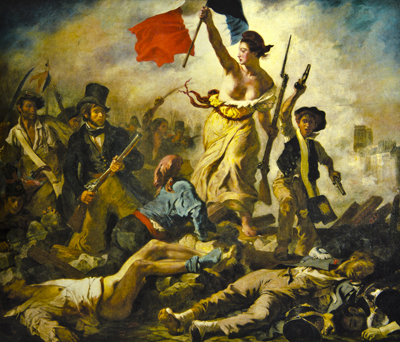Scandalous stories about jewelry supposedly belonging to Marie Antoinette helped spark the French Revolution, Aja Raden says.
by Greg Klein for www.resourceclips.com
Last year’s Swiss referendum about a partial return to the gold standard had two irreconcilable creeds challenging each other’s dogma. Gold believers expressed little or no faith in paper money while gold deniers showed absolutely no faith in yellow metal. One of the latter even compared gold to the “useless” stone currency of the Micronesian island of Yap.
Of course such an argument can be turned against any currency, not to mention any metal, mineral or other commodity not deemed essential to life as we know it. Moods, emotions and all sorts of subjective stuff prop up or tear down currencies, commodity prices and markets. That’s a subject explored by Aja Raden in Stoned: Jewelry, Obsession, and How Desire Shapes the World.
It’s partly a book about rocks that she says helped change the course of history. But there’s little or nothing here about copper, iron, coal or uranium, let alone the lithium, cobalt and graphite poised to transform our own age. As for gold and silver, they get scant attention. The author, a jewelry designer, gives diamonds and emeralds prominence, as well as some surprising non-minerals that have also captivated masses of people.
With considerably more enthusiasm than accuracy, Raden takes readers along an entertaining romp through history with lots of digressions that explain her take on commodity values. For example, the natives who sold Manhattan for glass beads remained happy with the deal long afterwards, she says. They had little use for the island and the colourful Venetian-manufactured trinkets were a currency of their time, much like the tribe’s wampum. Few people nowadays would criticize the deal, Raden argues, had the natives been given a sackful of diamonds.
But what are diamonds worth? “Gemstones are, in fact, just colourful gravel. They’re just rocks that we’ve given special names. True jewels are things that are beautiful and scarce.”
Or perceived to be beautiful and scarce. Raden tells us that tulipomania, “the first recorded economic bubble in history,” destroyed Holland’s economy. “By late 1636, at the height of the frenzy, the middle and lower classes were selling their homes and farmland to buy a single bulb. Like contemporary house flippers, they believed the bulb’s value was real, and that it could only continue to go up.” But when the bulb bubble burst, half of Holland fell destitute, she writes.

Psychological factors can affect one’s perception of scarcity, but so can market manipulation. That, along with one of the great advertising campaigns of all time, explains how De Beers “pulled off one of the greatest con jobs in history.” After the one-company cartel cornered virtually all diamond production, it manipulated scarcity by selling as many or as few stones as it wanted. With that kind of control on prices, De Beers went on to manipulate demand.
The company’s ad agency actually invented a tradition, Raden maintains. Until about 1947, a diamond ring wasn’t necessary to the engagement ritual. After “a diamond is forever” hit consumers, women became convinced “that ‘a proposal is not a real proposal without a diamond.’ Then slogans like ‘What’s two months’ salary for something that’ll last forever?’ even dictated the terms of what the engagement rings should cost—on a sliding scale, of course.”
As a result, “a diamond ring is the only piece of jewelry that [everyone] expects to buy or receive.”
Ah, the passions invested in these rocks. Raden claims the course of history has changed a number of times due to specific precious objects and the emotions people worked into them. She tells us, for example, about “the necklace that started the French Revolution” and the role of Fabergé eggs in creating the Soviet Union.
But you’d have to take her re-interpretations of history on faith because the book’s riddled with factual errors. Dutch weren’t mining African diamonds in the 17th century. Great Britain didn’t exist in the 17th century. The Edict of Nantes didn’t cause the expulsion of French Protestants. Maria Teresa didn’t rule the Austro-Hungarian Empire. Edward the Confessor wasn’t a pope.
Oh, and a bit of geography—Egypt isn’t in the Western Hemisphere.
But amid all these blunders, she writes:
Economics requires the wilful suspension of disbelief; in other words, the act of choosing to ignore reality in a specific situation. For example, when watching a play, we all agree to believe, during the play, that the actors can’t see us and don’t know that we’re there. If we didn’t, the illusion would be broken, and the play couldn’t continue. From burst tulip-market bubbles, to burst housing-market bubbles, someone, and then everyone, aggressively reintroduces reality, first in the form of doubt, and then in the form of panic (otherwise known as ‘shaken consumer confidence’). And it can destroy an economy in days; that’s how you get bank runs and stock-market crashes.
Observations like that are Stone’s strength, but the book definitely needs a disclaimer about backward-looking statements. Historical narrative shouldn’t require readers to suspend disbelief, as HarperCollins editors must have been doing while working on this manuscript.
Read more at original source: http://resourceclips.com/2015/12/17/a-stoned-study-of-history/

